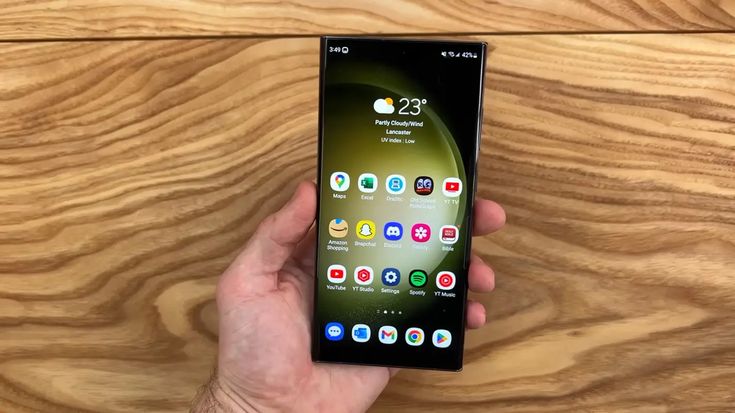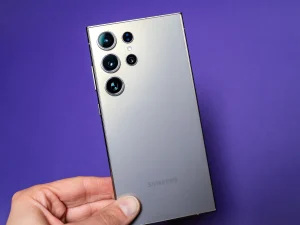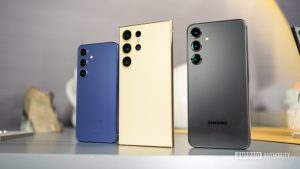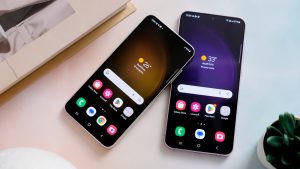By 2024, Android phones will see massive improvements in imaging technology. As smartphone photos continue to evolve, companies are pushing the boundaries to deliver the best possible photography experience. The latest camera technology, such as increased image count, better sensors, advanced computational photography, and artificial intelligence-powered features, seems to be changing the way people take photos with their phones. Here’s a closer look at the groundbreaking camera improvements that could be coming to Android phones in 2024.
High resolution sensor
The widespread use of high-resolution sensors is one of the most anticipated technological developments in 2024. The Samsung Galaxy S24 Ultra is expected to have a 200 MP main camera and be the frontrunner in this race. This new level of resolution allows users to take photos with great detail, as well as perform extensive cropping and zooming without losing too much quality. It’s likely that other companies, like Xiaomi, will also add high-resolution sensors, like the 200MP primary sensor reported for the Mi 14 Pro.
Better telephoto and periscope lenses
Telephoto and periscope lenses continue to improve over time, and 2024 will see even more improvements. These lenses feature stunning optical zoom capabilities that allow users to capture distant objects clearly. The Samsung Galaxy S24 Ultra, for example, will likely feature a 10 MP periscope telephoto lens with 10x optical zoom and a 10 MP telephoto lens with 3x optical zoom. These improvements make it easier for people to take high-quality enlarged photos without using digital zoom, which often degrades image quality.
Better performance in low light
Smartphone cameras have always had trouble taking photos in low light, but 2024 is about to change dramatically. Better low-light performance will come from better sensor technology and a wider aperture, allowing more light to hit the sensor. For example, the Google Pixel 8 Pro may have a new sensor that makes it more sensitive to light. This allows users to take better and more detailed photos in low light. Additionally, improvements in computational photography will improve low-light performance by reducing noise and increasing dynamic range.
Improvements in computational photography and artificial intelligence
Computational photography has changed the way smartphone cameras work, and by 2024 they will have more powerful AI-driven capabilities. These techniques, which use algorithms and machine learning, can process and enhance images. Google’s Pixel series is among the first phones to use artificial intelligence to improve image processing. The Pixel 8 and Pixel 8 Pro are expected to add new AI features to improve image processing, such as better HDR, better portrait mode, and real-time scene detection. These AI improvements make it easy for users to take beautiful photos as the camera automatically changes settings based on the scene.
Multiple camera settings
Multi-camera systems are now the norm on high-end smartphones, and 2024 will bring even more flexible setups. These systems typically use a mix of wide-angle, ultra-wide-angle, telephoto, and close-up lenses, allowing people to take photos from many different angles. The OnePlus 12 may have a triple camera system developed in collaboration with Hasselblad. The device will have a 50 MP primary sensor, a 50 MP ultra-wide-angle lens and a 64 MP telephoto lens with 3x optical zoom. Users can take a variety of photos by switching lens lengths and capturing wide landscapes and close-ups with great detail.
A better choice for recording videos
2024 could also see significant progress in video recording. The video recording experience will be better overall with high-resolution video recording, better stability and more advanced audio recording tools. For example, the Sony Xperia 1 VI is expected to record 8K videos and feature advanced autofocus, making it a perfect choice for both amateur and professional videographers. Better video stabilization technology also ensures footage is smooth and stable, even when shooting handheld.
Image stabilization via sensor shift
With sensor-shift image stabilization, the camera sensor can be moved to counteract any vibrations or movements. This makes the image clearer. The technology first appeared in high-end DSLRs and mirrorless cameras
The camera is said to have a 40MP front camera with better AI-powered beautification options and better low-light performance, allowing users to take beautiful selfies regardless of the lighting.
More advanced depth sensors and 3D images
Augmented reality (AR) and portrait photography are two areas where depth sensors and 3D imaging technology are becoming increasingly important. The Oppo Find X6 Pro is said to come with an improved ToF (time of flight) sensor that offers more accurate depth information. This results in better bokeh in portrait mode and a better AR experience. These sensors will also make facial recognition faster and more accurate, making it safer and easier for users.
In summary
By 2024, cameras in Android phones will have a lot of cool new features that will change the way people take photos and videos on their phones. The new smartphone promises excellent image quality and many different features. They feature high-resolution sensors, advanced optical zoom, better low-light performance and artificial intelligence computer photography. Whether you’re a professional photographer or just use your camera for fun, the latest improvements make it easy to take beautiful photos and movies. The future of mobile photography looks brighter than ever as companies continue to push the boundaries of what’s possible.




